DTC faults or Diagnostic Trouble Codes are the codes generated and stored by a vehicles On-board Diagnostic system indicating that a part or section of the vehicle is malfunctioning.
DTC Codes identify a specific problem area. Technicians can use the codes to diagnose the problem in causing the OBD to report the fault.
On-board diagnostic systems (OBD) have undergone a considerable evolution from 1996 when they were first introduced in the US, and so have the protocols that the computer uses to respond to the DTC faults.
Every vehicle with an OBD also comes with a manual for fault codes. The manual is what a professional or any knowledgeable driver can use to determine the systems, components and circuits that he or she should test to diagnose the vehicles fault.
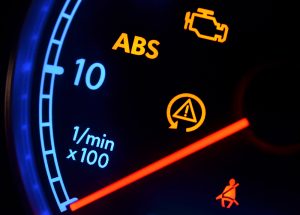 For most drivers, the only indicator of a DTC fault registered in their vehicles Electronics Computer Unit (ECU) is a Malfunction Indicator Lamp (MIL) or “Check Engine Light” that usually appears on the dashboard.
For most drivers, the only indicator of a DTC fault registered in their vehicles Electronics Computer Unit (ECU) is a Malfunction Indicator Lamp (MIL) or “Check Engine Light” that usually appears on the dashboard.
This is mostly not the case because in a modern automobile, the ECU is responsible for monitoring a dozen other sensors.
For this reason, it’s recommended that one refers to the service manual for a vehicle together with the right testing in order to supplement the result of the DTC faults before taking any actions like replacement of a component or part of the automobile.
When a DTC reports a sensor fault, the fault will mostly be resulting from two main spots; the system being monitored by the sensor, or the wiring to the sensor.
Replacing the sensor itself will therefore not solve the problem and it’s prudent that the driver or technical decodes the underlying problem.
Fault codes can sometimes also be triggered by fault that occurred a long time in the past.
For example an MAF sensor that has accumulated dirt over time might cause a vehicle to overcompensate in its fuel-trim adjustments which consequently will result in a report of fuel mixture problems by the oxygen sensors.
Types of Car Sensors
Car sensors are the main source of information for OBDs. In fact, DTC codes are reports generated from the functioning of car sensors.
In order to comprehensively understand fault codes, it’s necessary to understand the different car sensors in an OBD vehicle.
1) Mass Airflow Sensor (MAF)
The MAF sensor is used by the vehicles computer in determining the amount of air flowing into the engine.
This information is what is then used to calculate the right amount of fuel that should be put into the vehicles engine.
Most cars will either have a mass airflow sensor or a manifold absolute pressure sensor (MAP) but not both.
2) Throttle Position Sensor (TPS)
This is the sensor used by the vehicle in determining the distance that the gas pedal goes when pushed down.
On some vehicle models, these sensors can easily be cleaned to clear a TPS fault code.
3) Oxygen Sensor (O2 Sensor)
The Oxygen sensor or O2 sensor is located on several different places on the exhaust manifold and mostly also on the downstream side of the catalytic converted (CAT).
This sensor is used to compute the oxygen amount in the exhaust after combustion has occurred in the cylinder.
There is a normal amount that is expected and if the Oxygen sensor reads either a limitation or an excess in this it reports an error code and the PCM will set on the Malfunction Indicator Lamp (MIL) when the problem persists.
4) Knock Sensor
This sensor is represented by a tiny microphone that is bolted onto the engine block.
A small electrical charge will usually be sent to the computer when the engine causes a “knock”. The computer will then try to prevent the continuation of the knocking by adjusting the timing.
5) Manifold Absolute Pressure Sensor
This is the car’s sensor that is used by the ECM to compute the amount of pressure inside the intake manifold.
The information is necessary for determining the required fuel mixture to enable the most ideal combustion.
6) Other sensors
There are multiple other sensors that play a critical role in a vehicle. These include:
Transmission Shift Solenoid (TSS), Vehicle Speed Sensor (VSS), Vehicle Speed Sensor (VSS), Camshaft Sensor (CMP Sensor) and Crankshaft Sensor.
All these sensors contribute to the DTC codes that will be reported by a vehicles On-board diagnostic system.
Types of Fault Codes
Diagnostic Trouble Codes or OBD codes can be challenging to understand for even professional mechanics.
The problem with fault codes is exuberated by the fact that there is an increase in the numbers of auto part stores that will try to take advantage of motorists who panic on getting an MIL by selling them a replacement part as a solution for switching off the “Check Engine Light”.
It is advised that if you don’t understand the DTC codes even after reading the OBD manual you take the codes to a vehicle repair shop to be interpreted for you instead of rushing to purchase a component or system replacement part.
You will mostly get the fault code reading service for free at most local auto parts stores.
Be warned however, that even the sales agents at these stores may try to talk you into purchasing a spare part instead of helping you to make the correct diagnosis for the problem.
Apart from the manual, you can also check the meaning of the different DTC codes on the internet.
You can either check them on the websites of the specific vehicle model that you’re trying to diagnose (manufacture specific codes) or from DIY forums for people who try diagnosing the fault on the vehicle on their own.
Diagnostic and repair information specific to your vehicle model is necessary for troubleshooting, repair and maintenance of a vehicle.
In addition to the factory manual, you can also get step by step repair instructions and detailed diagrams from the internet to help you solve the fault that was registered.
There are two types of DTC or OBD codes for OBD-II vehicles. The two types can also be said to be in two categories.
Category number one is for “pending” DTC codes.
These are detected faults that don’t illuminate the Check Engine light” until the condition is repeatedly detected for a certain number of times.
On OBDII, these codes can be accessed on Mode 7.
The numbers of driving cycles that will cause a “pending” fault code to illuminate the “Check Engine Light” depend on the specific vehicle, the implementation and the fault.
The Second category of OBD fault codes is “stored” or “logged”.
These are true fault codes that will mostly almost immediately illuminate the Check Engine Light since they have been promoted by the “pending” codes and are deemed critical.
#Type 1 DTC Fault Codes
These are the most important and urgent OBD fault codes because they are capable of causing quick and sever damage.
These are emissions related (EVAP) codes. These codes will illuminate the Check Engine Light on failure of “one driving cycle” or create a trouble code freeze frame (information on other things happening in the engine) on failure of one “driving cycle”.
#Type 2 DTC Fault Codes
These codes are not very important but they still require your attention.
They include emissions related OBD codes that don’t result in a lot of pollution, codes that set or clear a “pending” trouble code after either one failed or one successful driving cycle.
Also codes that turn on the MIL light or store a freeze frame after two driving cycles that have failed consecutively are included in this group.
How to Read DTC Codes
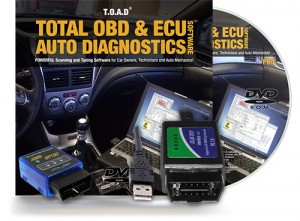 Once the “Check Engine Light” on your vehicles dashboard is illuminated (or any other sensor light) it means there is a problem that has been detected by the On-board diagnostic system on your car and this can significantly increase your emissions.
Once the “Check Engine Light” on your vehicles dashboard is illuminated (or any other sensor light) it means there is a problem that has been detected by the On-board diagnostic system on your car and this can significantly increase your emissions.
You need to be able to read and interpret the corresponding trouble code that will be set by the OBDII system.
An OBD scan tool or code reader can help you read the codes.
Vehicles manufactured earlier than 1996 will use an OBD-I scan tool while those post-1996 will use an OBDII scan tool.
You simply plug in one of these into the 16-pin OBDII diagnostic connector that is mostly located on the left side of the steering column under the dash board.
Because connectors are not universal, every pre-1996 vehicle diagnostic connector will have a different scan tool adopter that will connect to it.
Newer vehicle models will mostly have the same connectors although there may be variations in the software and sometimes the hardware depending on the model, make and year of the car.
Step By Step Instruction for Reading DTC Fault Codes
- Identify the 16-ppin OBDII diagnostic connector mostly located next to the steering column under the dash board and on the left side. There are vehicles that will have the connector in the center console and other vehicles where you may be required to remove a knee bolster panel or another type of panel to locate the connector. If you’re unable to locate the OBDII diagnostic connector, consult your vehicle owners’ manual.
- Plug in your OBD II scanner or code reader.
- To communicate with the ECU on your vehicle, either turn on the ignition or have the vehicle running depending on the requirement for your vehicles OBD.
- Push the button or select the option for “read codes” from the tool menu. You may have to enter the information for your vehicle year, mode and make if the scan tool you’re using is not set to automatically get this information.
- Your OBD scanner or code reader will then display any DTC faults present in a numerical order and for some tool also the definition of the code will be displayed. However, if your scanner does not display the code information, you can transfer the codes to your computer or smart phone via a Bluetooth, Wi-Fi or USB code if it has this capability, or simply write the codes down.
- You can then clear the codes if you wish from the “erase code” option on the scan tool menu or y pressing the “clear codes” button.
It’s important to note that the DTC faults are only to guide you on areas that you should do a further diagnosis on to find the underlying problem with your vehicle.
They only indicate that there’s a problem in a particular system, circuit or sensor but won’t tell you what parts need replacement.
Also understand that clearing the codes won’t make the problem with the car disappear and you can expect to see the MIL or Check Engine Light illuminated with the same codes set back if the problem persists.
Understanding the “Check Engine Light”
The Malfunction Indicator Lamp (MIL), popularly known as the Check Engine Light is just one among the many indicators in the vehicle that indicate DTC faults.
This light is often turned on only when the DTC fault can potentially affect emissions.
Other lights that may be turned on by DTC faults include airbag or SRS light when there’s a problem with the airbags, and ABS light for break related DTC.
The MIL light can come on and off, flash, or remain on continuously depending on the problem and the system configuration.
Sometimes the Check Engine Light will go off on its own permanently after a number of driving cycles even if you don’t manually clear the DTC codes.
This is for example if the condition that was triggering the code solves itself or is repaired like in the case of catalyst efficiency (code P0420).
Overall, it’s important to take note and to take action when you spot the “Check Engine Light” not just because there might be a bigger underlying problem that if not solved will cause your vehicle to stall, but also because your vehicle may fail to pass the emissions test if you live in a country like the U.S where emissions testing is a requirement.
Do’s And Don’ts for Check Engine Light
 Never ignore the Check Engine light if it comes on and stays lit even if you can still drive your car.
Never ignore the Check Engine light if it comes on and stays lit even if you can still drive your car.
This is because an MIL light that stays lit is an indicator of a critical problem with your vehicle that calls for urgent attention.
Most times your vehicles engine computer will set itself to “limp-home” or “back-up” mode when the MIL light comes on to allow the car to continue running until you have fixed the problem.
This mode utilizes a lot of fuel and it’s therefore critical that you solve the fault as soon as possible.
The first thing that you should always check when the MIL comes on is the gas cap which will normally tend to set off the light when broken or loose.
In most circumstances, tightening the gas cop will solve the problem with the light.
Emissions test have a validity period of 90 days.
This is an opportunity for you to solve any problems detected during your emissions test before the expiry of your registration.
Instead of panicking when your Check Engine light comes on and stays on, simply call your dealers to enquire if your vehicle has a warranty cover.
Most vehicles will have either an 80,000 miles or 8 years warranty for CEL problems and this can save you a lot of money.
Ensure that you unplug any gadget that monitors your driving habits from under the dashboard since this may cause the emissions testing station to fail your vehicle.
Don’t just clear your DTC faults using your OBD scanner and imagine that the problem has been fixed.
This is especially dangerous if you plan on taking your vehicle for the emissions test within days.
The inspectors at the emissions testing center will have their own OBD scanner which means they will find the DTC fault codes and will reject your vehicle.
Do not take your vehicle for the emissions test if your vehicles existing battery has been lowly cranking, had been previously disconnected, is dead or is just newly replaced.
This is because your vehicles computer memory gets lost when the vehicle battery goes below five volts. Without the OBD memory you will automatically fail your emissions test.
Conclusion
DTC fault codes are stored in the PMC memory when the later identifies a problem.
For OBD II systems, they are represented in five-digit alphanumeric code numbers.
DTCs that are related to emissions will often start with P0xxx whereas codes starting with P1xxx are manufacture specific and will mostly not trigger the MIL light.
There are standard codes that are required by law for all OBD II system vehicles. What this means is that there is a standard code list for all the common DTC codes.
A misfire code P0300 will thus represent the same problem on a Toyota, Ford, Chrysler or Chevy.


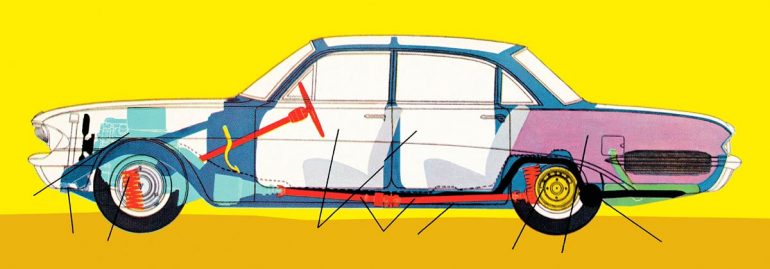
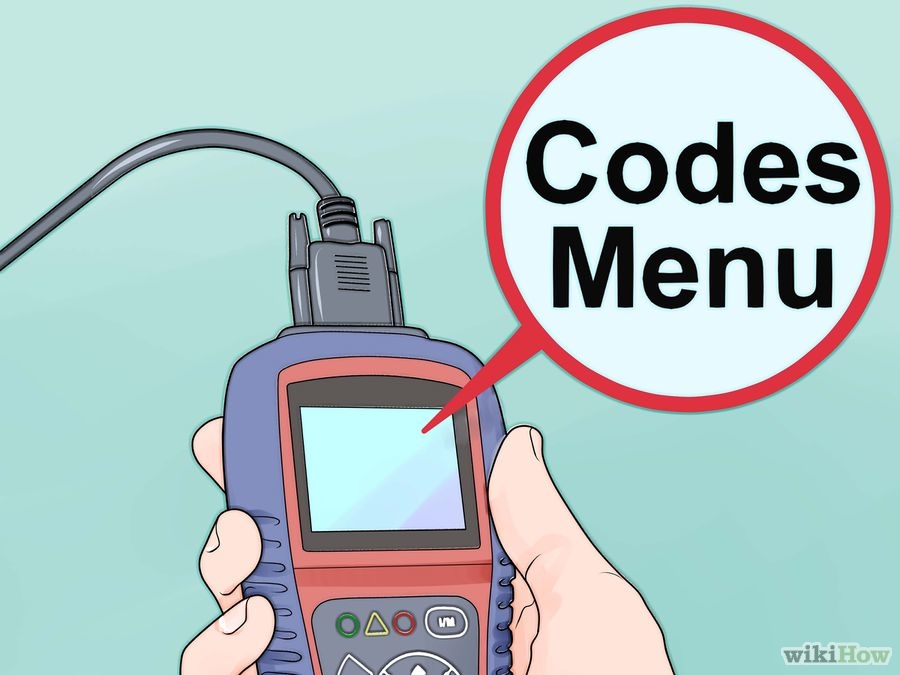
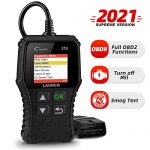
Thank you for providing a clear and easy way to understand the above material.
No
Replaced the downflow o2 sensor couple days ago. Afterward the code was cleared. Car was not driven from 530pm Tuesday till Thursday 1am. Driving to work the mil lit up again. My question is. Even with the code cleared, can it still remain in the cars computer memory?
Is there anyone else here with a Tib that is throwing a DTC code related to the O2 Sensors but doesn’t have a CEL?
I have had the same P0140 fault code for awhile now, hopefully to be fixed Monday/Tuesday, but my CEL isn’t illuminated? Kinda been throwing me off because I know i’ve been messing with this issue for awhile, either P0420 or else a P0140 is thrown. Usually the CEL comes on as well. A few hundred miles or so it was on and with the P0140 code but then went out and has been out since. Kinda strange I thought.
With that being said, has anyone recently scanned their Tib to see if it’s throwing any codes without the CEL being on? Is this really normal? Makes me wonder if when we use CEL Eliminators to clear the CEL, if instead of actually “fixing” the problem by tricking the ECU into thinking the exhaust flow is being filtered, it just causes the O2 readings from having headers to vary just enough so that the CEL doesn’t light up even tho the ECU is still throwing the code. . . Anybody with a CEL eliminator and no CEL care to scan their Tib to see if any hidden codes are being thrown?
my car says no DTC stored in computer
but battery get drained during driving is there any explanation.
This article finally answered what is dtcs codes or what is a dtc. d t c means: Diagnostic Trouble Codes, meaning cars chip stores all faults, just how computer logs all OS errors.
More importantly, to clear an emission related engine dtcs, isn’t just about resetting it inside a scantool, but rather correcting the physical problem. Else the MIL light will come back on immediately. So how to clear fault codes? By FIRST repairing the problem yourself or taking it to mechanic. Else dangerious driving with fault artificially cleared.
If asking about DTC’s…
Every car sold in the U.S. since 1996 has had an OBD (On-Board Diagnostic) II
system that tests the catalytic converter (among many other things). If the
unit allows too much pollution to escape from the tailpipe, it illuminates the
MIL and produces a trouble code that can be read by a technician with
what’s called a “scan tool.”
Was looking for emission related engine dtcs info asd foudn this. Thanks. Helpful indeed to diagnose misfire related issue in Ford 2015.
Helpful article. Was driving yesterday, orange DTC MIL light came on with statement: Check DTC code. I know it was emission related as went to mechanic recently, but didn’t know what is the DTC meaning in the car.
Emission related engine DTCs can cause a vehicle to malfunction when the exhaust gas smog level is too high, causing the car to emit harmful emissions. Although these DTCs are generally easy to diagnose and repair, they can also be very difficult to fix. It is vital to fix the source of the problem before trying to repair the PDTC. However, there are ways to fix these codes and avoid having to pay a costly towing bill.
Every vehicle with an OBD system comes with a manual that will list the fault codes on the vehicle and what they mean. This can be helpful for drivers and professional mechanics, as it will help them figure out what tests to run to diagnose a problem. Most drivers will only see the Malfunction Indicator Lamp (also known as the Check Engine Light) and won’t realize that there are more than a dozen sensors in a modern vehicle.
You can understand the car DTC meaning by looking at the code. These codes are five characters long and contain information about the vehicle’s problem. For example, B-codes are for features that are located inside the passenger compartment. C-codes refer to features that are located outside the passenger compartment, such as brakes, steering, and suspension. U-codes are for functions shared by the different systems of a vehicle, such as the engine, transmission, powertrain, and drivetrain.
To get to the root of your vehicle’s issue, you must understand the meaning of DTC. While DTCs are useful in diagnosing various car problems, they are not enough. A car DTC could also be related to a sensor fault if the sensor is malfunctioning, or to wiring connected to it. Replacing the sensor, however, will not solve the problem. Deciphering the meaning of DTCs is essential in finding the cause of a DTC.
When you notice the dreaded DTC, it is time to seek a professional diagnosis. While these codes can be deceiving, they are actually designed to help you find out what’s wrong with your vehicle. Most codes are composed of four or five characters. The first character always represents the type of system that is experiencing a malfunction. The second character indicates a generic code, while the third character represents the specific sub-system that is malfunctioning.
DTC is short for direct-to-consumer, and it refers to brands that only sell to their customers. Unlike traditional retailers, direct-to-consumer businesses have full control of the marketing channels they use to reach their target audience. This includes the ability to control everything from website messaging to purchase confirmation emails. Using this model, DTC brands can create an overall experience that satisfies their customers, both online and offline.
DTC Faults are informational codes that are produced by the computer when a vehicle experiences a malfunction. These codes come in four categories, each with their own set of requirements and symptoms. The first category is Clear, which indicates no fault condition. The second category, Pending, indicates fault conditions, but must persist for a significant period of time before the fault can be confirmed. The fourth category, Active, indicates a fault condition that requires action.